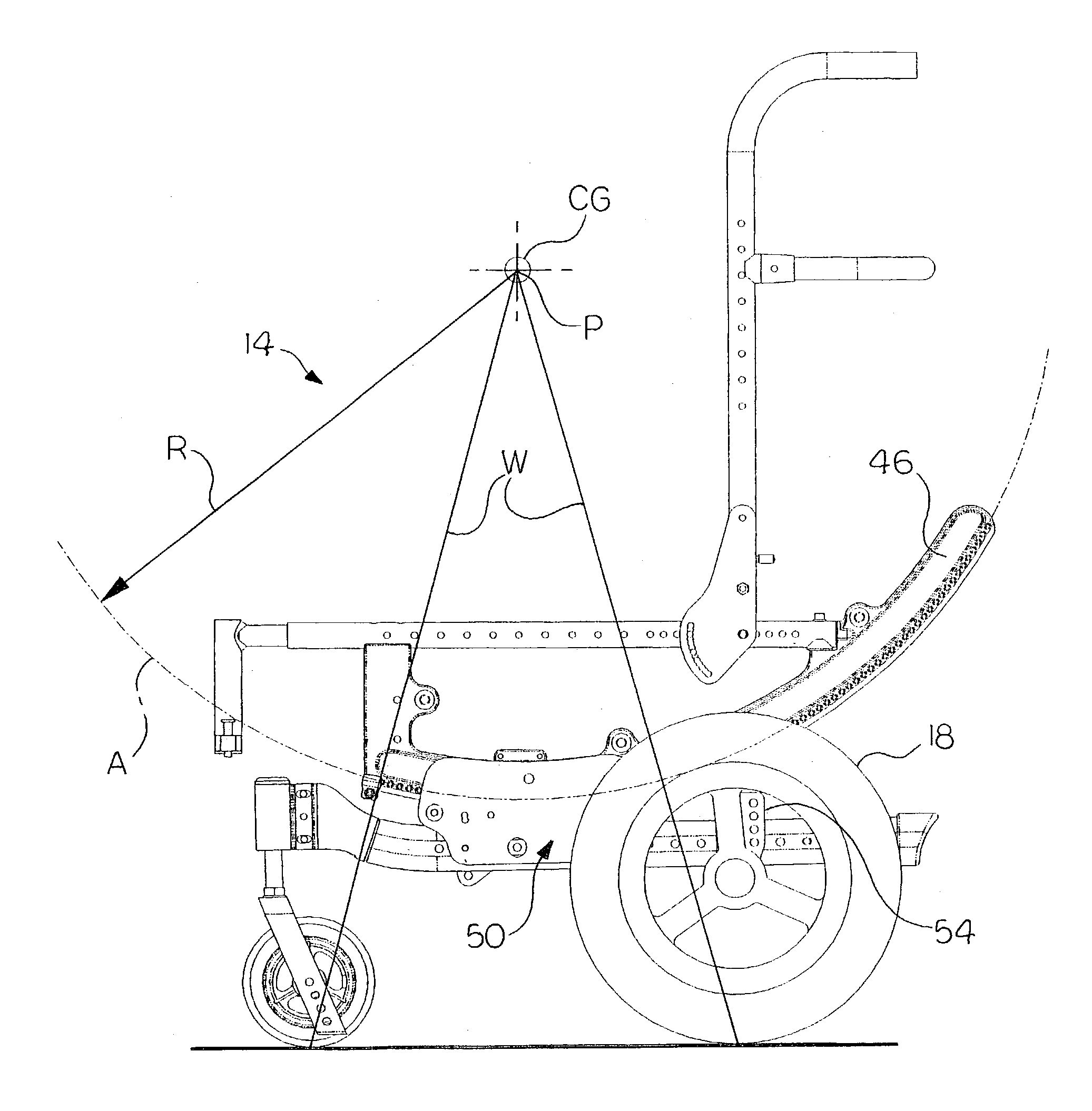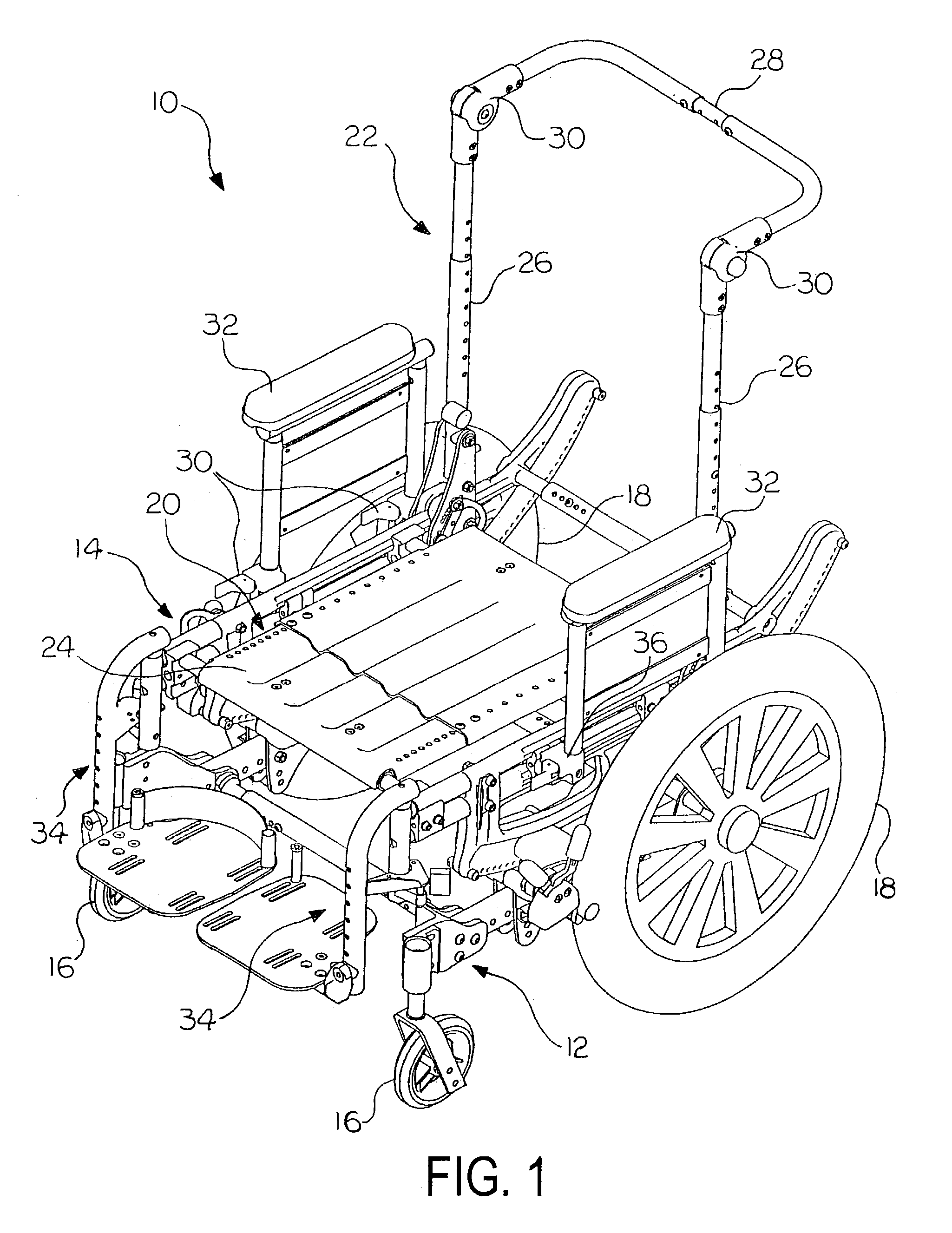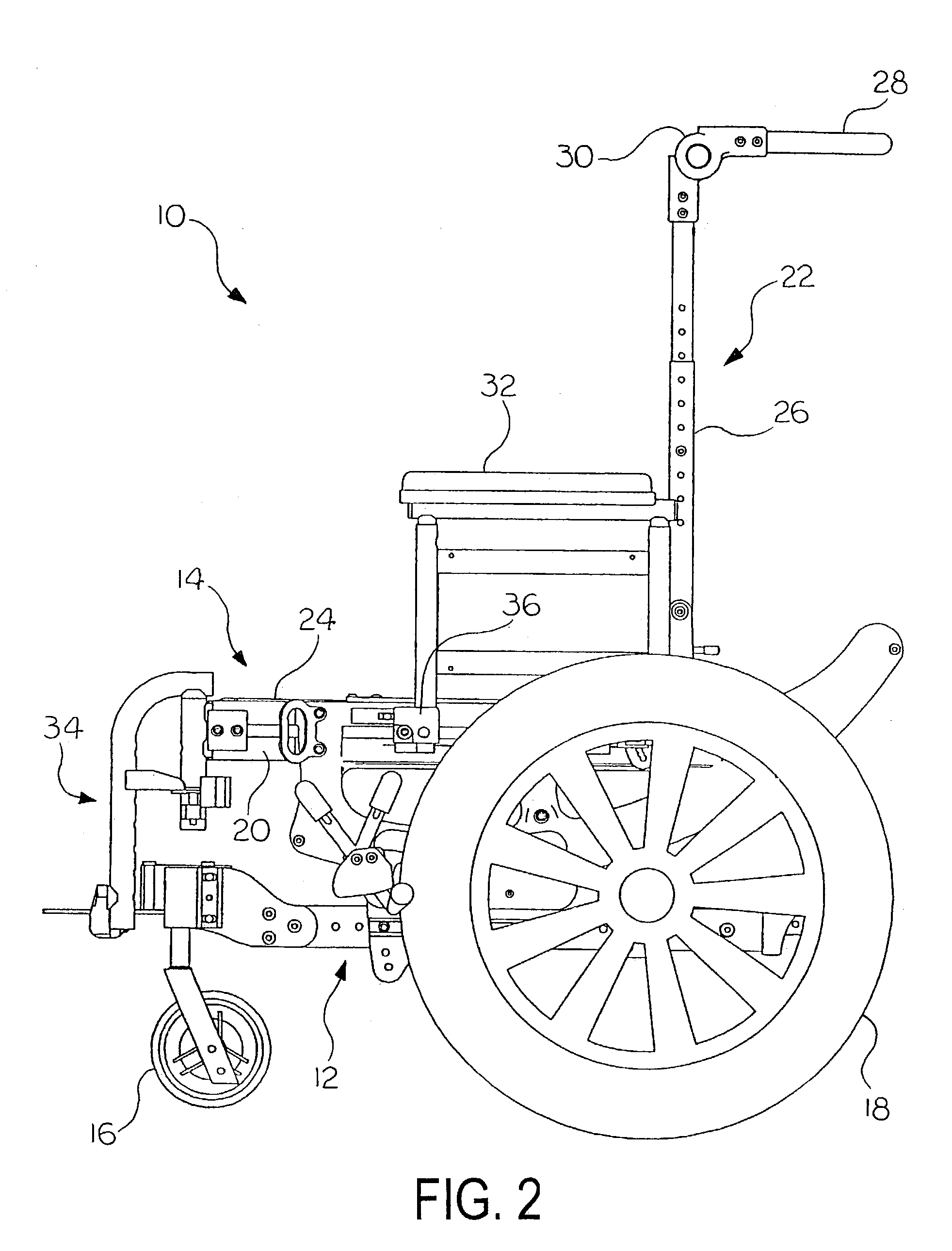Center-of-gravity tilt-in-space wheelchair
a wheelchair and center-of-gravity technology, applied in the field of land vehicles, can solve the problems of pressure sores, decubitus ulcers, etc., and require effort on the part of attendants
- Summary
- Abstract
- Description
- Claims
- Application Information
AI Technical Summary
Benefits of technology
Problems solved by technology
Method used
Image
Examples
Embodiment Construction
[0032]Referring now to the drawings, there is illustrated in FIGS. 1 and 2 a center-of-gravity tilt-in-space wheelchair, as generally indicated at 10. The wheelchair 10 has a base 12 and a seat assembly 14 supported by the base 12. The base 12 is supported on a supporting surface by wheels, such as the front casters 16 and the rear wheels 18 shown. The rear wheels 18 are preferably driven wheels, which may be manually driven or power driven.
[0033]The seat assembly 14 has a seat frame 20 and a seat back 22. The seat frame 20 includes longitudinally extending tubes for supporting a seat 24, which can be in the form of a semi-rigid or rigid pan, as shown, or a sling (not shown). The seat 24 may include mating parts, as shown, that are longitudinally adjustable relative to one another to permit the length of the seat 24 to be adjusted. The seat back 22 preferably includes laterally spaced canes 26 for supporting a backrest (not shown). The canes 26 are preferably formed of telescopic tu...
PUM
 Login to View More
Login to View More Abstract
Description
Claims
Application Information
 Login to View More
Login to View More - R&D
- Intellectual Property
- Life Sciences
- Materials
- Tech Scout
- Unparalleled Data Quality
- Higher Quality Content
- 60% Fewer Hallucinations
Browse by: Latest US Patents, China's latest patents, Technical Efficacy Thesaurus, Application Domain, Technology Topic, Popular Technical Reports.
© 2025 PatSnap. All rights reserved.Legal|Privacy policy|Modern Slavery Act Transparency Statement|Sitemap|About US| Contact US: help@patsnap.com



